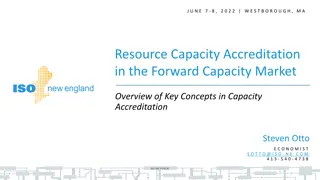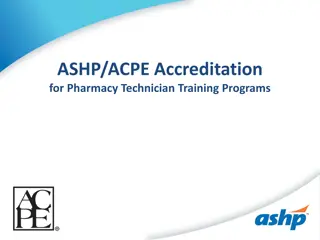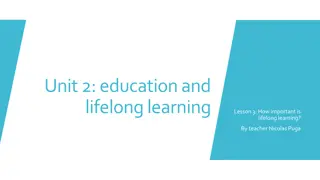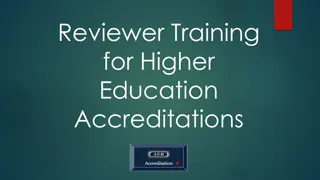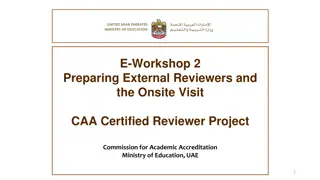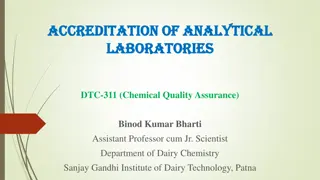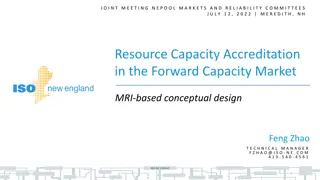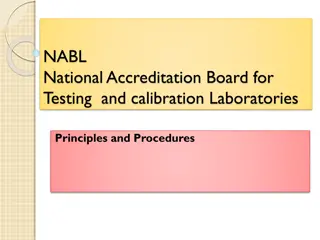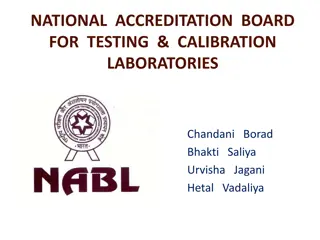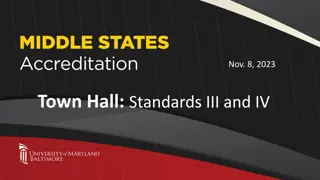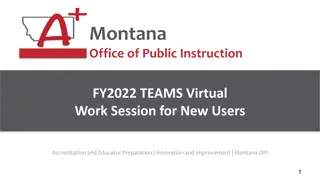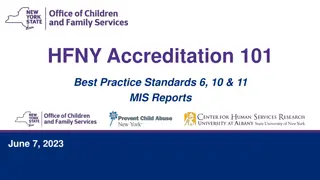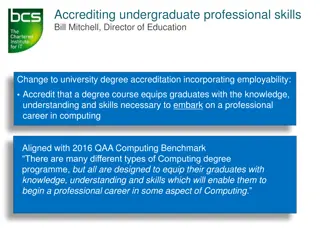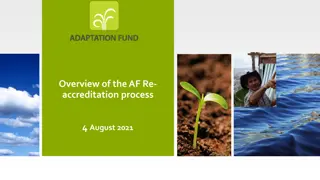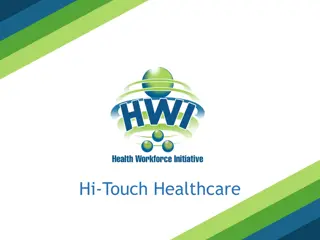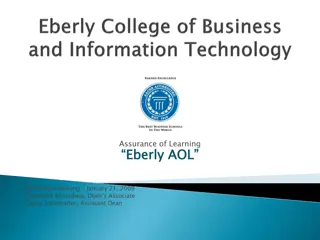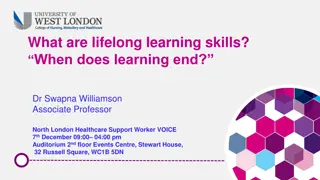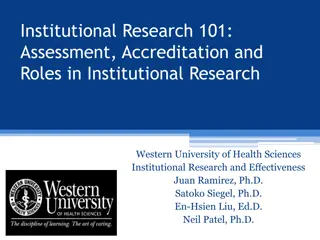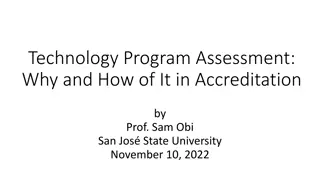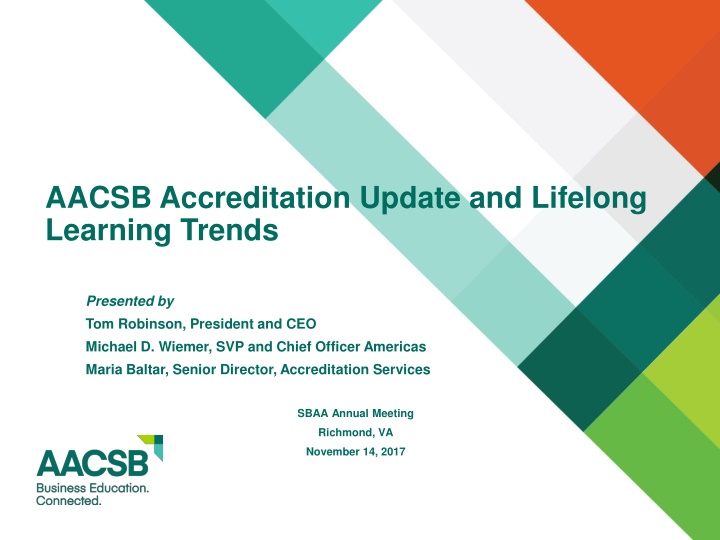
AACSB Accreditation Update and Lifelong Learning Trends
Dive into the latest trends in AACSB accreditation and lifelong learning, presented by industry leaders at the SBAA Annual Meeting. Explore updates on initial accreditation, continuous improvement, outcomes, and faculty insights.
Download Presentation

Please find below an Image/Link to download the presentation.
The content on the website is provided AS IS for your information and personal use only. It may not be sold, licensed, or shared on other websites without obtaining consent from the author. If you encounter any issues during the download, it is possible that the publisher has removed the file from their server.
You are allowed to download the files provided on this website for personal or commercial use, subject to the condition that they are used lawfully. All files are the property of their respective owners.
The content on the website is provided AS IS for your information and personal use only. It may not be sold, licensed, or shared on other websites without obtaining consent from the author.
E N D
Presentation Transcript
AACSB Accreditation Update and Lifelong Learning Trends Presented by Tom Robinson, President and CEO Michael D. Wiemer, SVP and Chief Officer Americas Maria Baltar, Senior Director, Accreditation Services SBAA Annual Meeting Richmond, VA November 14, 2017
AGENDA AACSB Accreditation Update Trends in Lifelong Learning Business Advisory Council Questionnaire Discussion
AACSB Accreditation Update Trends in Initial Accreditation and Continuous Improvement Reviews Accounting Accreditation Task Force Update
Accreditation Outcomes 2016-17 Initial Accreditation 30 new business accredited, 3 deferrals Americas: 7 Asia-Pacific: 12 Europe, Middle East and Africa: 11 1 new accounting accredited 271 schools currently in initial accreditation process* Americas: 62 Asia-Pacific: 99 Europe, Middle East & Africa: 110 Americas AP EMEA * Source: AACSB data and analysis as of 08/31/2017 5
Continuous Improvement Reviews - Business CIR2 Outcomes 2011-17 27% 27% 21% 18% 18% 18% 2011-12 2012-13 2013-14 2014-15 2015-16 2016-17 6
Continuous Improvement Reviews Accounting CIR2 Outcomes 2011-17 16% 9% 9% 8% 8% 5% 2011-12 2012-13 2013-14 2014-15 2015-16 2016-17 7
All Faculty By Subcomponents 2013-14 (n=573) SP IP PA SA 4.68% 10.33% 7.10% 77.90% Percentage 1367 3021 2075 22776 Number of Faculty 2016-17 (n=616) SP IP PA SA 5.13% 11.98% 6.67% 76.22% Percentage 1822 4257 2368 27080 Number of Faculty 8
Accounting Faculty By Subcomponents 2013-14 (n=573) SP IP PA SA Percentage 5.22% 15.86% 6.14% 72.78% Number of Faculty 250 759 294 3484 2016-17 (n=616) SP IP PA SA Percentage 5.82% 17.78% 5.47% 70.93% Number of Faculty 337 1030 317 4108 9
Accounting Accreditation Task Force Task Force Charge: The task force is charged with a undertaking a comprehensive review of accounting accreditation, including standards, processes, structure and priorities.
Accounting Accreditation Task Force Recommendations Increase value by more currency with practice and reduce non-value added costs More practitioner engagement in all aspects of accreditation Accounting Accreditation Policy Committee PRT Visits Governance Representation Enhance training of volunteers, especially in consultative engagement Standards should be more principles based and outcomes focused eliminating duplication with business standards Streamlined report referencing business standards 9 Standards reduced to 6 Standards Standards should be flexible enough to accommodate different missions and models. Faculty composition and deployment needs to be flexible enough to align with mission and strategies. Intellectual contributions and impact should better align with mission.
Accounting Accreditation Task Force Timeline September 2017 Reported to the AACSB Board of Directors October 2017 First exposure draft of standards & processes February 2018 Second exposure draft of standards & processes April 2018 Accounting Accreditation Council to vote on proposed standards 2018-19 Begin implementation of Accounting standards and processes
Discussion/Q&A Accreditation 13
Trends in Business & Society What s Coming? 14
The Impact of Automation The New Normal 99% .03% Mental Health Workers Tax Preparers 15
The Impact of Automation The New Normal 5% 60% of occupations consist of activities that are 100% automatable. of occupations consist of activities that are at least 30% automatable. Source: McKinsey Global Institute, A Future That Works: Automation, Employment, and Productivity, January 2017 16
Future Workforce Agile & Adaptable Anywhere, Anytime Workforce Traditional Workforce Digital Workforce Virtual Workforce Contingent Workforce Gig Economy Source: Ellen Glazerman, Developing the professional of the future 17
UN Population Projections (in thousands) Northern America* World 2015 2025 2015 2025 Age 15-24: 48,876 Age 25-59: 166,056 Age 15-24: 47,893 Age 25-59: 169,928 Age 15-24: 1,194,505 Age 25-59: 3,351,969 Age 15-24: 1,243,830 Age 25-59: 3,703,359 Age 15-24: 4.13% Growth Age 25-59: 10.48% Growth Age 15-24: -2.01% Growth Age 25-59: 2.33% Growth *US -1.61% and 2.49% Source: United Nations DESA / Population Division 18
Population Forecasts Countries With Greatest Percent Projected Decline, Age 15-24 Countries With Greatest Percent Projected Growth, Age 15-24 -28% Republic of Korea 44% Democratic Republic of the Congo -17% Poland 41% Uganda -14% Malaysia 40% United Republic of Tanzania -13% Vietnam 36% Nigeria -13% Germany 34% Afghanistan -12% Thailand 30% Kenya -12% China 28% Sudan -12% Ukraine 27% Iraq -10% Brazil 22% Ethiopia -9% Uzbekistan 13% Egypt (min. projected population of 20 million) (min. projected population of 20 million) Source: United Nations DESA / Population Division 19
Trends in Business Education What s next for business schools? 20
Business School Weaknesses Strengths Trends Identified in Visioning Process SWOT Style Opportunities Threats
Lifelong Learning: Business and Leadership Education 23
AACSB Accredited Enrollment Distribution 2015-16 Global (n=664) EMEA (n=91) 10.6%1.4% 2.5% 22.1% 14.8% 51.0% 73.1% 24.5% Undergraduate Masters-Generalist Undergraduate Masters-Generalist Masters-Specialist Doctoral Masters-Specialist Doctoral Americas (n=505) Asia-Pacific (n=68) 6.0% 0.7% 3.1% 12.4% 15.9% 13.2% 67.7% 81.0% Undergraduate Masters-Generalist Undergraduate Masters-Generalist Masters-Specialist Doctoral Masters-Specialist Doctoral
AACSB Accredited Enrollment Growth Enrollment Growth 2010-11 to 2015-16, Controlled Set of AACSB-Accredited Schools (n=565) 31.15% 35.00% 30.00% 22.96% 25.00% 20.00% 10.47% 10.09% 15.00% 8.34% 10.00% 5.00% 0.00% -5.00% -3.82% -10.00%
Specialty Certification Comparison Global CFA Program June Exams Administered 160,000 140,000 120,000 100,000 80,000 60,000 40,000 20,000 - 2011 2016 20% Growth 2011 to 2016
Implications Location, Location, Location Lifelong Learning, Lifelong Learning, Lifelong Learning Be a Hub of Lifelong Learning With Business Community Integrated with Corporate T&D Across Campus Serving Alumni Networks Through their Career Lifecycle Revolving Door An alternative strategy is to focus on one piece of LL in that case be aware of what else is happening and demonstrate how your focused strategy fits in. Modular and Stackable Educational Experiences Top-Off Programs for Specialty Masters or Other Credentials Cumulative Transcript or Individual Learning Record 29
Business Advisory Council Questionnaire Discussion 31

